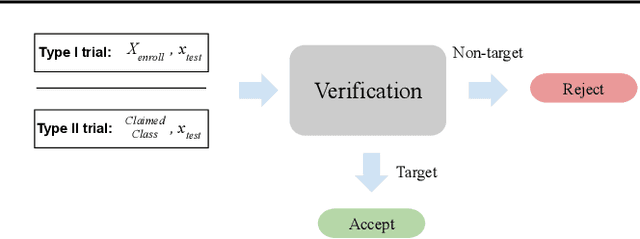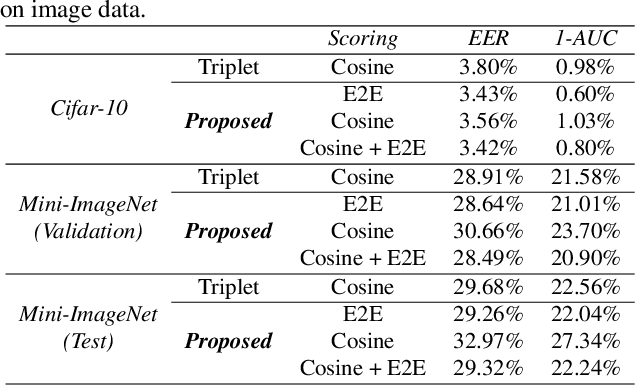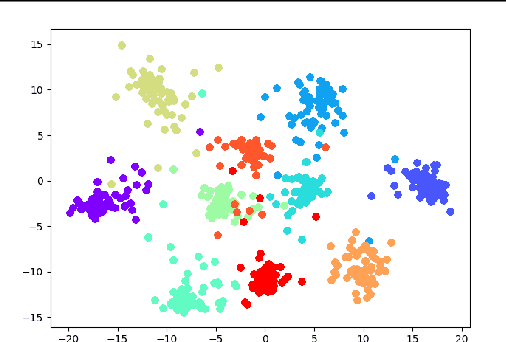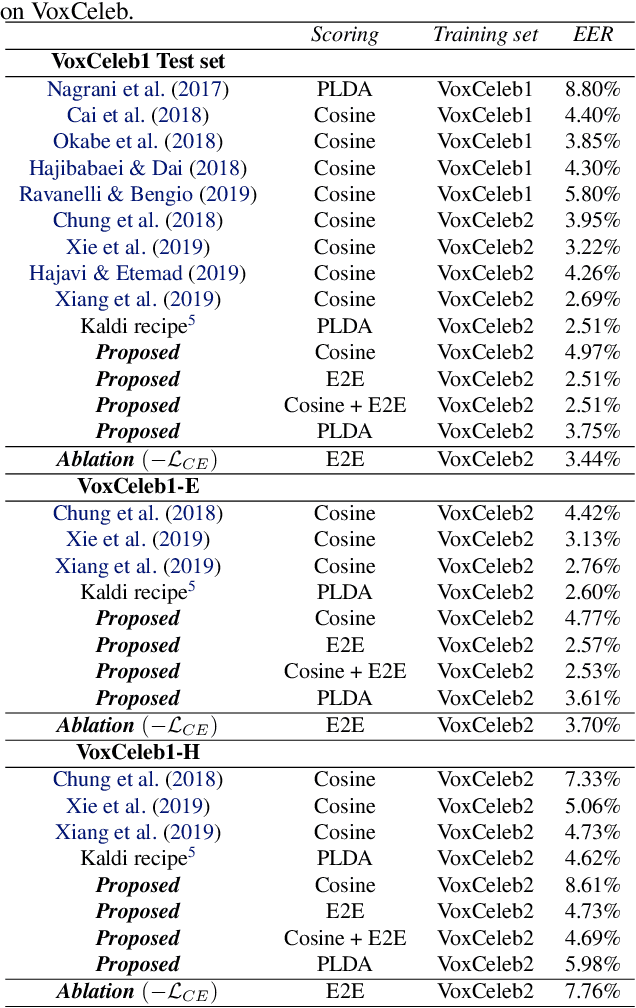Isabela Albuquerque
Imagen 3
Aug 13, 2024Abstract:We introduce Imagen 3, a latent diffusion model that generates high quality images from text prompts. We describe our quality and responsibility evaluations. Imagen 3 is preferred over other state-of-the-art (SOTA) models at the time of evaluation. In addition, we discuss issues around safety and representation, as well as methods we used to minimize the potential harm of our models.
Evaluating Model Bias Requires Characterizing its Mistakes
Jul 15, 2024



Abstract:The ability to properly benchmark model performance in the face of spurious correlations is important to both build better predictors and increase confidence that models are operating as intended. We demonstrate that characterizing (as opposed to simply quantifying) model mistakes across subgroups is pivotal to properly reflect model biases, which are ignored by standard metrics such as worst-group accuracy or accuracy gap. Inspired by the hypothesis testing framework, we introduce SkewSize, a principled and flexible metric that captures bias from mistakes in a model's predictions. It can be used in multi-class settings or generalised to the open vocabulary setting of generative models. SkewSize is an aggregation of the effect size of the interaction between two categorical variables: the spurious variable representing the bias attribute and the model's prediction. We demonstrate the utility of SkewSize in multiple settings including: standard vision models trained on synthetic data, vision models trained on ImageNet, and large scale vision-and-language models from the BLIP-2 family. In each case, the proposed SkewSize is able to highlight biases not captured by other metrics, while also providing insights on the impact of recently proposed techniques, such as instruction tuning.
Mind the Graph When Balancing Data for Fairness or Robustness
Jun 25, 2024



Abstract:Failures of fairness or robustness in machine learning predictive settings can be due to undesired dependencies between covariates, outcomes and auxiliary factors of variation. A common strategy to mitigate these failures is data balancing, which attempts to remove those undesired dependencies. In this work, we define conditions on the training distribution for data balancing to lead to fair or robust models. Our results display that, in many cases, the balanced distribution does not correspond to selectively removing the undesired dependencies in a causal graph of the task, leading to multiple failure modes and even interference with other mitigation techniques such as regularization. Overall, our results highlight the importance of taking the causal graph into account before performing data balancing.
Evaluating Numerical Reasoning in Text-to-Image Models
Jun 20, 2024



Abstract:Text-to-image generative models are capable of producing high-quality images that often faithfully depict concepts described using natural language. In this work, we comprehensively evaluate a range of text-to-image models on numerical reasoning tasks of varying difficulty, and show that even the most advanced models have only rudimentary numerical skills. Specifically, their ability to correctly generate an exact number of objects in an image is limited to small numbers, it is highly dependent on the context the number term appears in, and it deteriorates quickly with each successive number. We also demonstrate that models have poor understanding of linguistic quantifiers (such as "a few" or "as many as"), the concept of zero, and struggle with more advanced concepts such as partial quantities and fractional representations. We bundle prompts, generated images and human annotations into GeckoNum, a novel benchmark for evaluation of numerical reasoning.
Revisiting Text-to-Image Evaluation with Gecko: On Metrics, Prompts, and Human Ratings
Apr 25, 2024Abstract:While text-to-image (T2I) generative models have become ubiquitous, they do not necessarily generate images that align with a given prompt. While previous work has evaluated T2I alignment by proposing metrics, benchmarks, and templates for collecting human judgements, the quality of these components is not systematically measured. Human-rated prompt sets are generally small and the reliability of the ratings -- and thereby the prompt set used to compare models -- is not evaluated. We address this gap by performing an extensive study evaluating auto-eval metrics and human templates. We provide three main contributions: (1) We introduce a comprehensive skills-based benchmark that can discriminate models across different human templates. This skills-based benchmark categorises prompts into sub-skills, allowing a practitioner to pinpoint not only which skills are challenging, but at what level of complexity a skill becomes challenging. (2) We gather human ratings across four templates and four T2I models for a total of >100K annotations. This allows us to understand where differences arise due to inherent ambiguity in the prompt and where they arise due to differences in metric and model quality. (3) Finally, we introduce a new QA-based auto-eval metric that is better correlated with human ratings than existing metrics for our new dataset, across different human templates, and on TIFA160.
Generative models improve fairness of medical classifiers under distribution shifts
Apr 18, 2023Abstract:A ubiquitous challenge in machine learning is the problem of domain generalisation. This can exacerbate bias against groups or labels that are underrepresented in the datasets used for model development. Model bias can lead to unintended harms, especially in safety-critical applications like healthcare. Furthermore, the challenge is compounded by the difficulty of obtaining labelled data due to high cost or lack of readily available domain expertise. In our work, we show that learning realistic augmentations automatically from data is possible in a label-efficient manner using generative models. In particular, we leverage the higher abundance of unlabelled data to capture the underlying data distribution of different conditions and subgroups for an imaging modality. By conditioning generative models on appropriate labels, we can steer the distribution of synthetic examples according to specific requirements. We demonstrate that these learned augmentations can surpass heuristic ones by making models more robust and statistically fair in- and out-of-distribution. To evaluate the generality of our approach, we study 3 distinct medical imaging contexts of varying difficulty: (i) histopathology images from a publicly available generalisation benchmark, (ii) chest X-rays from publicly available clinical datasets, and (iii) dermatology images characterised by complex shifts and imaging conditions. Complementing real training samples with synthetic ones improves the robustness of models in all three medical tasks and increases fairness by improving the accuracy of diagnosis within underrepresented groups. This approach leads to stark improvements OOD across modalities: 7.7% prediction accuracy improvement in histopathology, 5.2% in chest radiology with 44.6% lower fairness gap and a striking 63.5% improvement in high-risk sensitivity for dermatology with a 7.5x reduction in fairness gap.
Discovering Bugs in Vision Models using Off-the-shelf Image Generation and Captioning
Aug 18, 2022



Abstract:Automatically discovering failures in vision models under real-world settings remains an open challenge. This work demonstrates how off-the-shelf, large-scale, image-to-text and text-to-image models, trained on vast amounts of data, can be leveraged to automatically find such failures. In essence, a conditional text-to-image generative model is used to generate large amounts of synthetic, yet realistic, inputs given a ground-truth label. Misclassified inputs are clustered and a captioning model is used to describe each cluster. Each cluster's description is used in turn to generate more inputs and assess whether specific clusters induce more failures than expected. We use this pipeline to demonstrate that we can effectively interrogate classifiers trained on ImageNet to find specific failure cases and discover spurious correlations. We also show that we can scale the approach to generate adversarial datasets targeting specific classifier architectures. This work serves as a proof-of-concept demonstrating the utility of large-scale generative models to automatically discover bugs in vision models in an open-ended manner. We also describe a number of limitations and pitfalls related to this approach.
Improving out-of-distribution generalization via multi-task self-supervised pretraining
Mar 30, 2020



Abstract:Self-supervised feature representations have been shown to be useful for supervised classification, few-shot learning, and adversarial robustness. We show that features obtained using self-supervised learning are comparable to, or better than, supervised learning for domain generalization in computer vision. We introduce a new self-supervised pretext task of predicting responses to Gabor filter banks and demonstrate that multi-task learning of compatible pretext tasks improves domain generalization performance as compared to training individual tasks alone. Features learnt through self-supervision obtain better generalization to unseen domains when compared to their supervised counterpart when there is a larger domain shift between training and test distributions and even show better localization ability for objects of interest. Self-supervised feature representations can also be combined with other domain generalization methods to further boost performance.
An end-to-end approach for the verification problem: learning the right distance
Feb 21, 2020



Abstract:In this contribution, we augment the metric learning setting by introducing a parametric pseudo-distance, trained jointly with the encoder. Several interpretations are thus drawn for the learned distance-like model's output. We first show it approximates a likelihood ratio which can be used for hypothesis tests, and that it further induces a large divergence across the joint distributions of pairs of examples from the same and from different classes. Evaluation is performed under the verification setting consisting of determining whether sets of examples belong to the same class, even if such classes are novel and were never presented to the model during training. Empirical evaluation shows such method defines an end-to-end approach for the verification problem, able to attain better performance than simple scorers such as those based on cosine similarity and further outperforming widely used downstream classifiers. We further observe training is much simplified under the proposed approach compared to metric learning with actual distances, requiring no complex scheme to harvest pairs of examples.
Self-supervised representation learning from electroencephalography signals
Nov 13, 2019



Abstract:The supervised learning paradigm is limited by the cost - and sometimes the impracticality - of data collection and labeling in multiple domains. Self-supervised learning, a paradigm which exploits the structure of unlabeled data to create learning problems that can be solved with standard supervised approaches, has shown great promise as a pretraining or feature learning approach in fields like computer vision and time series processing. In this work, we present self-supervision strategies that can be used to learn informative representations from multivariate time series. One successful approach relies on predicting whether time windows are sampled from the same temporal context or not. As demonstrated on a clinically relevant task (sleep scoring) and with two electroencephalography datasets, our approach outperforms a purely supervised approach in low data regimes, while capturing important physiological information without any access to labels.
 Add to Chrome
Add to Chrome Add to Firefox
Add to Firefox Add to Edge
Add to Edge